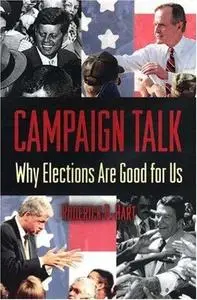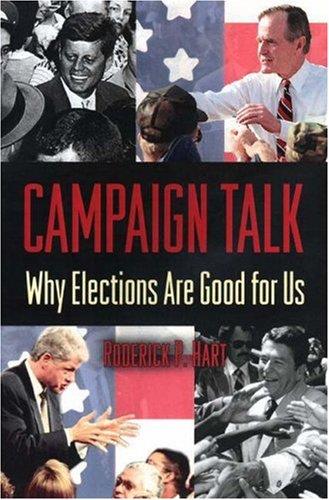Campaign Talk By Roderick P. Hart
2000 | 325 Pages | ISBN: 069100126X | PDF | 2 MB
2000 | 325 Pages | ISBN: 069100126X | PDF | 2 MB
Hart's book was written almost ten years ago, so his analysis of 2000 presidential campaign language is less interesting, if not less valid. Three things make this book still worth reading. Hart discusses his key word-based software used to analyze political language, presents century-long trends in political speechmaking, and compares the differing "voices" of politicians, ordinary citizens and the media. His overall approach and many of his conclusions remain relevant. Hart's DICTION program uses key words to score the tone, rather than the content, of text passages. Data from previous analysis of political speeches, advertisements, letters to the editor, and other text samples are used to calculate expected scores for these types of documents. This information can be used to determine how the speeches of a particular candidate differ from average. Hart's five primary scales are: - Certainty - Language that indicates resoluteness, inflexibility and completeness - Optimism - Highlighting positive attributes of people, concepts or events - Activity - Indicating movement, change and implementation of ideas - Realism - Describing tangible, immediate matters from everyday life - Commonality - Indicating group values rather than individualism or idiosyncrasy Each scale has its own structure and subscales, outlined in Appendix 1 of the book. Hart uses these scales to examine patterns of political language, showing for example that more "Optimistic" campaigns tend to be more successful. He also shows that speeches from the same candidates shift from "Optimistic" to "Realistic" language following successful election, regardless of party affiliation. The book is full of such findings, both intuitive and counterintuitive. Once readers understand the DICTION approach, well explained in the first chapter, they are able to understand and evaluate Hart's conclusions based on it in the remainder of the book. Most interesting is Hart's comparative analysis of how politicians and the media communicate--summarized in Chapter 8 (p. 210). According to Hart's findings, politicians score high on Realism, Self-Reference, Tenacity, Patriotic Terms, Inspiration, Praise and Satisfaction. They score lower than normal on dimensions of Insistence, Political Party Reference and References to Other Political Leaders. Media communications score at the opposite ends of these ten scales while ordinary citizens (in letters to the editor, etc.) score in the middle. These 2000 findings would be interesting to compare to language from the 2008 campaign, a time of less positive politicians and greater media partisanship. Interested readers can find more DICTION-based language research by Hart and his colleagues in Political Keywords: Using Language that Uses Us, The Sound of Leadership: Presidential Communication in the Modern Age, and The Political Pulpit Revisited. His program remains useful for understanding variations in language tone in collections of documents.



